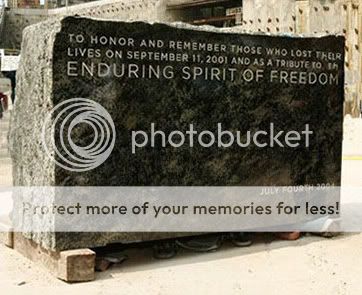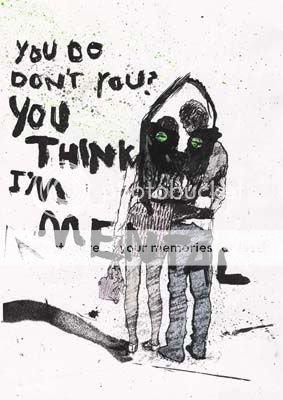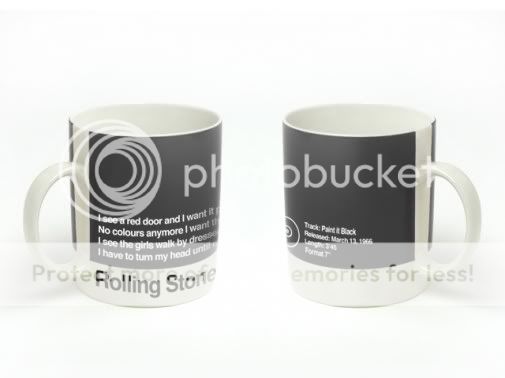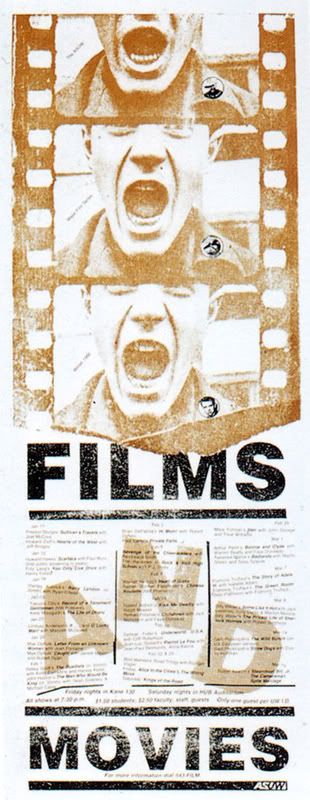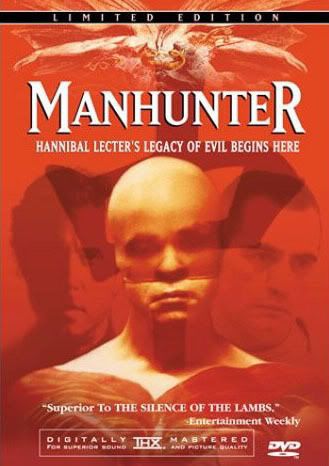
Truly, I can say that MSP changed my life. In an incident I still do not comprehend, my life was irreparably altered by one of their songs while walking in Cambridge, England in 1999. Ever since that moment, I have felt fused to them in a way different from most bands that I love. I still cannot explain it.
Disappointing then, that every album post This Is My Truth, Tell Me Yours has been letdown after letdown. Not bad albums really, just kind of boring and forgettable. And after you have had your life changed by them, or even merely heard The Holy Bible or A Design For Life, it is somewhat painful to recognize that each new album was - transitory and harmless. I had reached the point where I felt that there would be no comeback, or return to form. MSP had altered themselves - maybe evolved more precisely - to become a safe, greatest hits performing stadium group. Just seeing Nicky Wire occasionally perform in his Richey/Stay Beautiful era feather boa made me cringe - the act itself felt like just that - an act from a band that had begun so painfully sincere.
But here is the really complicated part: I always felt that I could not blame them for developing into this innocuous, disposable form. MSP had been altered, but not by James or Nicky or Sean, but by Richey of course. Richey's abrupt disappearance on February 1, 1995 remains one of the biggest mysteries in rock history, and maybe the most interesting and hoax-free. I cannot imagine what it is like to be MSP - is Richey dead? Alive? Could he walk in the door at any moment? Where is Richey? And what happened to him? After all, this was a band of best friends since childhood, a tighter unit than any in rock history. Surely the fracture felt by Richey's disappearance was a such a formidable severance that they could not, should not, attempt to be the same band.
With each successive album, Nicky's lyrics became more and more trite, evidently written by a man bored with the practice without his brilliant, obsessive sparing partner to compose with. And though I tried as a listener, to connect with Found That Soul or Your Love Alone Is Not Enough or Baby Elian or For The Love of Richard Nixon I simply could not help but feel as though these were hollow shells that I could not truly feel. But clearly this was a band (at least somewhat) operating on fumes. And while being hard to swallow as a fan, I always felt torn - while fiercely loyal to MSP, in my heart of hearts I knew that each new album was - to paraphrase Sick Boy in Trainspotting - not good.
And so, here in 2009, arrives a most unexpected renaissance - Richey is back from the dead, or wherever he may be. Though he did not physically walk in the door, his return is no less surprising and unsettling. The band decided to write their new album around Richey's left behind lyric book. This was not simply a group taking unfinished poetry and setting it to music - these were actual finished lyrics that Richey had completed and submitted to the rest of band a few weeks previous to his disappearance. This was not unusual - Richey's modus operandi was to complete a vast collection of lyrics and then turn them over to James and Sean to pair with music they had previously written.
So after all these years, there would be a new MSP record lyrically composed by Richey. That album, entitled Journal For Plague Lovers, is here. Intended as a companion to The Holy Bible, JFPL is a risky proposition. As another reviewer noted, it is a bit like Oasis releasing Definitely Maybe II or The Rolling Stones bringing out Another Exile On Main Street. In other words, by consciously invoking comparison to their finest work, MSP placed themselves in the unenviable position of being judged against a now mythical, monolithic work of genius. Frankly, I like the guts MSP has shown by taking on this challenge. Before even hearing the album, I felt that by even attempting such a task proved that MSP had awoken from a now decade long slumber.
JFPL, it must be said, is not equal to The Holy Bible. It couldn't be. It is not possible. That being said, it is easily their best album in a decade, and crackles with a vitriolic viscerality not seen since their mid-nineties peak. Even the cover art hearkens backwards - provided by significant British painter Jenny Saville - as she had previously for The Holy Bible. The choice of legendary producer Steve Albini is a superb decision - Albini does what he does best here - he gets out of the way and simply documents the music. All the pieces set in place, the questions became: would MSP rise to the challenge? Could MSP rise to the challenge, or had too much time spent asleep paralyzed them? Is the bar set by Richey too high too attain without his physical presence?
Opening with a sample from the Machinist, Peeled Apples rips open with a ferocity and darkness heavier than anything MSP has written since PCP faded from memory, and their second best album opener ever, second only to Sleepflower from 1993's overproduced Gold Against The Soul. It is immediately obvious that we are firmly worded in Richey territory - only Richey could have written the chorus - "Riderless horses in Chomsky's Camelot". This is vital, hair standing up on the back of your neck songwriting, the likes of which is a region tread by Richey Edwards and Richey Edwards alone.
The Manics pop inclinations show up immediately, in the form of Jackie Collins Existential Question Time, which features my favorite lyric on the album, a nostalgic but smirking, "Oh Mummy, What's A Sex Pistol?". It's poppy in the way that From Despair To Where or Australia is, but with that odd discordant structure that is unique to James Dean Bradfield's songwriting. A breezy melody and soft vocal delivery mask a lyric as dark and desperate as any in the MSP canon. It's an exhilarating blast of pop, paired with exceptionally dark lyrics concerning the question of if a wife dies without knowing her husband was cheating, then does that constitute being unfaithful? I imagine it was these types of debates that would keep Richey up at night.
Some of the other highlights are the title track, as well as Marlon J.D. which includes a sample of Marlon Brando speaking, and features the excellent line, "I will not beg/because this is how I am". Virginia State Epileptic Colony treads a musical territory similar to Interiors from Everything Must Go. Actually much of the album feels similar to Interiors in the dry production and rough textured guitars. The record clips along, each song pointing into the next, until Nicky Wire takes over the vocals for closer William's Last Words. The experience of listening to William's Last Words is extremely difficult - the lyrics are a suicide note expressing thanks and gratitude to the friends being left behind - and I cannot imagine what the experience must have been like for the men of MSP. Confused, complicated, contradictory - William's Last Word's, like JFPL, is Richey Edwards to the last.
The entire album drifts in an odd darkness, and as much as it is described as a sort of sequel to The Holy Bible, it is more of a companion piece, as this is a different, yet related territory. The Richey-less, poppier inclinations of MSP creep into some of these tracks - and it isn't always a bad thing, just an important distinction. While The Holy Bible is a black hole without even the suggestion of light, JFPL lingers in a half-dark twilight. Richey is here in every breathe, every note, in the atmosphere and cinematic scope. His spectral visage is difficult to remove from the mind of listener. Richey's lyrics, as always, are cryptic, puzzling, disconcerting, and extremely powerful, conjuring images and juxtapositions that make the listener squirm. There is a power here that is unlike any other in modern rock and roll.
It must be said that JFPL is unlike any other listening experience I have ever had, carrying so much baggage that it is not possible to separate all that we know, all the history, mystery, and drama that is MSP from the actual music. In an age of faceless, nameless, disposable pop and rock, JFPL is the rarest of objects - an album that challenges the listener with complex and incongruous emotions. In the midst of all this confusion an unexpected emotion emerges for the listener - a comforting feeling of visiting an old friend. Even in the bleakest lyrics, one cannot help but feel a warmness at the thought of Richey sitting somewhere, writing them. So many conflicting emotions, sometimes diametrically opposed from listen to listen.
The entire experience of listening to the album feels like sitting around a seance table, listening intently to the disembodied voices of the dead. At the very least these are lyrics from another era - the early/mid nineties - referencing culturally significant period events long since passed. Perhaps this is a rebirth for the band, perhaps it is merely a sideways jaunt. Regardless, JFPL is an unforgettable listening experience, and that in itself is its own reward. Thank you Richey, for giving us this last gift from your place of internment, or from wherever you are.
This is the aural and emotional wake of Richey Edwards, one that never occurred due to the circumstances of his disappearance. JFPL is truly a final opportunity to recognize his unusual talents and recognize his rightful place in the pantheon of greats. Thank you MSP, for laying Richey to rest in the most fitting way possible - a flawed, distressed, clarion call from beyond the grave.
The Verdict: 4 out of 5 stars.
BTW - superb interview with James and Nicky here, the full res cover here.









